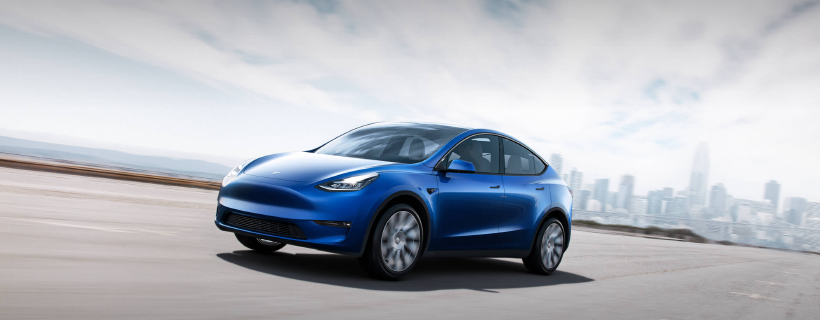Tesla reported Dec-19 earnings of $2.14 per share (vs expectations of $1.72) and revenue of $7.38B (vs expectations of $7.02B). The company generated $1B in operating cash flow less capex vs. the Street at $429m. Shares were up much as 12% in after-hours trading on the favorable December cash flow eroding a long-term investor concern around profitability along with the company moving up Model Y production by six months.
The results over the past three quarters are evidence the company’s long-term potential is undeniable; a pole position in the future of transportation. This does not mean the company will fully capitalize on the opportunity in front of them. The business remains risky given the layers of complexity of scaling a company from 350k vehicles to millions annually which undoubtedly will create lumpiness in the stock in the years ahead. That said, the opportunity in mobility is massive, and Tesla is the most obvious company to capture a large piece of the prize.
The Valuation Question
The remaining pillar of concern is valuation. Valuing Tesla on historical tech comps would correctly direct investors to stay on the sidelines. We’re reminded of the lessons of the .com rose-colored glasses approach to investing, which should be kept top of mind. That said, the best companies that survived the .com bubble are valued higher today.
Given the progress over the past year along with the size of the opportunity, all indications point to Tesla’s stock taking a similar path to Amazon’s over the past decade, with valuation continuing to move higher. The key question remains: how much is a foundational company in the future of transportation worth? We think more than the current $110B.
What’s incremental:
- Tesla provided guidance for full-year 2020 vehicle deliveries to “comfortably exceed” 500k vehicles. This is ahead of Street expectations of 463k deliveries.
- Model Y already in production six months ahead of plan, and they expect to start deliveries by the end of Q1.
- The company expects to be both cash flow positive and GAAP net income positive going forward. The Dec-19 update states, “we continue to believe our business has grown to the point of being self-funding.”
- Automotive gross margin was essentially stable sequentially (22.5% vs 22.8% last quarter) despite the Shanghai Model 3 production at a negative gross margin.
- Cash increased $930M to a total of $6.3B. This cash balance gives the company room for error, given we estimate the company needs $2.5B in the bank to fund operations, factoring in upcoming costs to ramping Model 3 in Shanghai, Model Y, construction of the Berlin Gigafactory, and debt services.
Eroding Pilars of Investor Concern:
December results are slowing eroding 3 of the 4 pillars of investor concerns including:
- Are people ready for EVs?
- Can they build them fast enough?
- Will they run out of cash?
The Potential of a Business Miracle
The thesis for Tesla’s business miracle is rooted in the handful of years that the company operated with effectively no competition. They have invested aggressively and built expertise in areas that will make a new EV buyer more likely to buy a Tesla than a new EV from a traditional automaker. Tesla has nearly a decade head start in EVs because other automakers have under-invested in the space, giving the company deeper knowledge related to battery design, a charging network with greater coverage, a better user experience, and more advanced self-driving capabilities.
Three Foundational Advantages
- A More Efficient Battery. Range is one of the most important factors of an EV buying decision. Range anxiety represents the biggest headwind for mass adoption of EVs in the near-term. Once the entire industry has gone through the massive transition to electric, components like long-range batteries, electric drive trains, and a ubiquitous charging network will be largely commoditized. That said, in the next ~10 years, differentiation in these areas will be important in gaining market share. Tesla’s accumulation of advantages in these areas lies at the center of its potential business miracle.
- Vertically Integrated Charging Network. There are 15,000 Tesla fast-charging stalls worldwide, which is 10x greater than ChargePoint’s 1,500 fast charging stalls. It is generally accepted that Tesla’s charging network is preferred to generic EV charging stations, because of its near ubiquity (99% of the US population lives within 150 miles of one) and ease of use (integrated route planning and payment). This has been a huge area of investment for Tesla and will continue to be a focus for years to come. Although we believe that that EV charging will eventually be commoditized similar to current fuel infrastructure, it represents a huge comparative advantage for Tesla. Nothing eases range anxiety like knowing you can charge your car at several locations nearby, and it’s a compelling selling point when EV buyers are considering their options.
- Software Updates and Deferred Revenue. In September, Tesla released Software Version 10.0. The most notable new feature, Smart Summon, allows Tesla owners who have purchased Full Self-Driving (FSD) or Enhanced Autopilot to request their vehicles to self-navigate a driveway or parking lot and pick them up. The company sells its Full Self-Driving (FSD) software upgrade for $7,000 per vehicle. Tesla is the only car company that incrementally recognizes revenue on high-margin software as they roll out new versions and features. This creates a unique system of taking in money to continuously develop and improve the system that consumers have paid for up-front. Another advantage is Tesla’s proprietary hardware, which is capable of powering more advanced features as Tesla inches closer to full autonomy.
